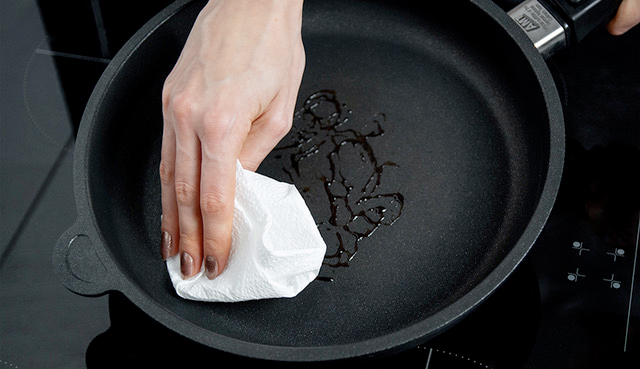MARCH 25, 2020 | AMT PANS
A Foodie's Guide to Maximizing the Function of Nonstick Pans

Nonstick pans are a modern convenience and essential in most foodies' kitchens. It allows for easy cooking without overusing fats or oils to prevent sticking. But how do you choose between the hundreds of brands available on the market? While the price is a factor, cheaper ones tend to be made of less durable materials and have a shorter lifespan. You can’t go wrong by investing in quality nonstick cookware. Longer lasting and better for your health and environment, you’ll get a better overall cooking experience with good pots and pans. The award-winning line of AMT pans is recognized for its innovation and quality. Its nonstick coating is PFOA free, designed for durability and even heat distribution. Take care of these standard-setting pots and pans by following these steps.

Using nonstick cookware
Well-made AMT nonstick cookware sets itself apart from the competition. Conventional nonstick pans don't handle dramatic temperature changes well, which can cause the coating to weaken and warp over time. AMT items can take the heat, going from room temperature to a hot stovetop to a cold water soak with no issues. There's also no need to avoid acidic ingredients like tomatoes or lemon juice the way you would with typical nonstick. If the pan is properly cleaned after each use, the nonstick surface on AMT pans is engineered to last even under these demanding conditions. Still, good foodies know the first rule of cooking with any nonstick: never use metal utensils! These tools can scratch and nick the coating. Silicone spatulas and whisks are ideal because they can tolerate higher temperatures than plastic utensils without causing damage to the pan.

Cleaning nonstick cookware
Put away your SOS pad. Just like sharp utensils, abrasive cleansers and metal utensils can damage even the most durable of nonstick coatings. While AMT cookware is dishwasher safe, hand washing is ideal. Clean your pots and pans shortly after use with liquid soap and warm water before wiping dry. The Veleda Scrunge is great for your daily cleaning needs. Available at grocery stores and general retailers, this two-sided sponge has a rippled surface on one end to gently cleanse nonstick pans without scratching. For a deeper clean, try a plastic bristle dishwashing brush or a sponge with a scouring pad like the 3M Scotch Brite.

Storing nonstick cookware
We’ve all done left uneaten food in the pan overnight, but it’s definitely not considered a best practice. Wash your nonstick cookware (following the steps above, of course) after each use. Storage space might be at a premium in your kitchen, but it’s also a good idea to avoid putting things on top of nonstick items to keep the coating from being scratched. If you must stack your cookware, line the pan surface with a paper tower before placing something else on top. For more protection, use something thicker, like a silicone or cork pot trivet between each stacked pan. Alternatively, a storage rack or a hanging setup can also help get around this problem.
AMT makes some of the best pans available on the market, and their nonstick cookware is designed for performance and longevity. Engaging in basic care techniques will help extend their life and usability. This way, they can hold up to provide you with a great cooking experience for years to come.
.jpg)